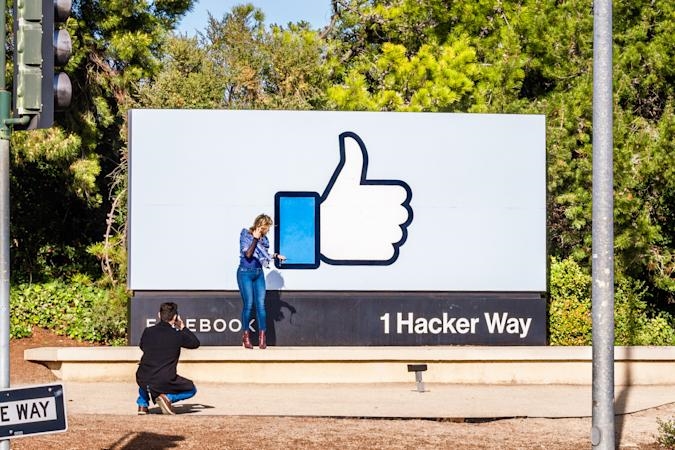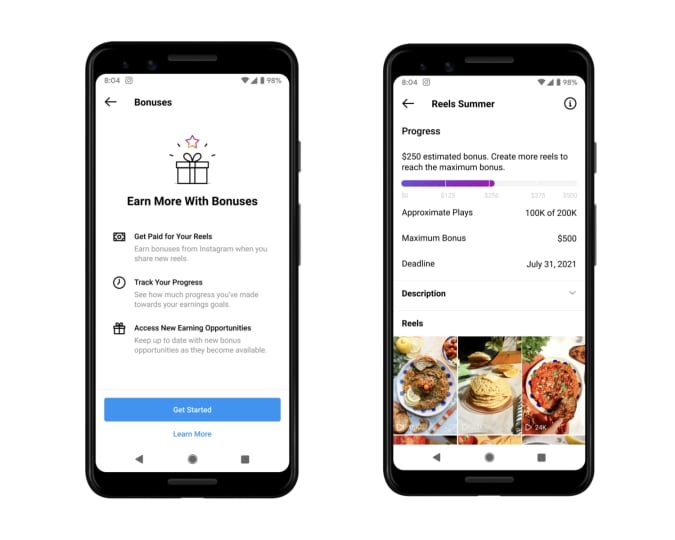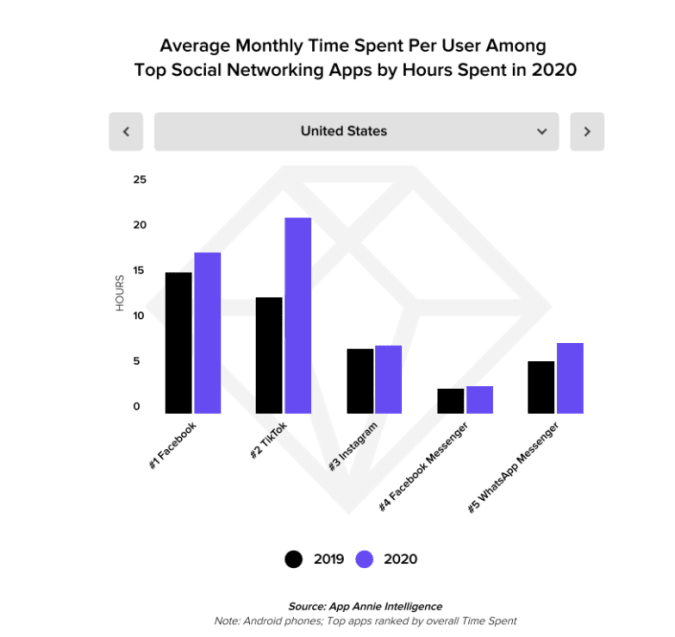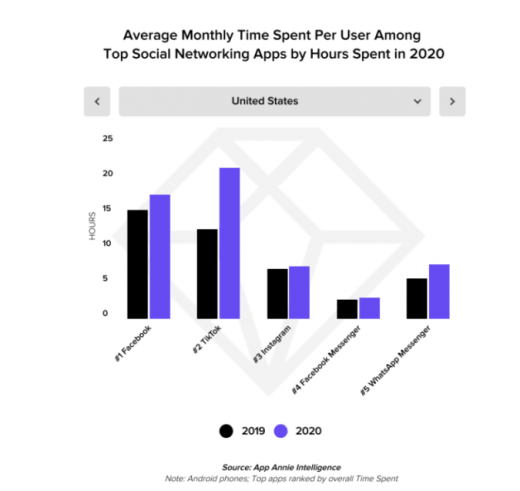Mark Zuckerberg says video accounts for almost half the time spent on Facebook
Why Facebook’s betting $1 billion on creators
It can’t afford not to.


Last month, Instagram held its first-ever Creator Week, a virtual event the company described as “a life-changing three days with new feature news and celeb drop-ins.” One of those drop-ins was CEO Mark Zuckerberg, who made a brief appearance to share a message with creators.
“I think that any good vision of the future has to involve a lot more people being able to make a living by expressing their creativity and by doing things they want to do, rather than things they have to — and having the tools and the economy around them to support their work is critical,” he said. “Our goal is to be the best platform for creators like you to make a living.”
This week, Zuckerberg went even farther, announcing that Facebook plans to invest $1 billion in creators by the end of 2022. The investment will fund bonus programs, creator funds and other monetization programs to boost all stripes of creators on its platform.
That Facebook is funneling so much money and resources toward creators is indicative of not just the opportunity the company sees, but how much ground it has to make up.
For years, Facebook simply didn’t do much for creators. While Instagram has long had its own influencer community, the company has at times tried to limit their reach. Instagram’s founders were reportedly uncomfortable with the rise of influencers, and introduced an algorithmic feed to ensure users would see more posts from friends and family than brands and businesses.
While YouTube has offered monetization features for more than a decade, Instagram didn’t offer any kind of revenue sharing feature until last year. And many creators often felt at odds with Instagram. The company’s ever-changing algorithm fueled suspicions that it “shadowbans” or otherwise penalizes users who post too much or about the “wrong” topics.
“Facebook has been late to the game in terms of supporting the creative community in a meaningful way,” says Qianna Smith Bruneteau, founder of the American Influencer Council, a trade group representing the creator industry.
But Facebook is now trying to reverse those perceptions. For the past year, the company has been steadily churning out new tools for creators to make money. Since last May alone, the company has introduced a dizzying number of money-making features.
On Instagram, creators can now make money from commercials in IGTV or open their own shops. They can sell badges and products in live streams. On Facebook, they can host paid virtual events, promote fan subscriptions, or sell in-app gifts in live streams or audio rooms. Soon, they’ll be able to start paid newsletters, earn affiliate commission from products their followers buy and participate in a branded content marketplace. The company is also launching several new bonus programs that will pay creators for signing up for IGTV ads, creating Reels or meeting live-streaming milestones.

Zuckerberg and other top executives now regularly speak about creators and the opportunity they represent. The company is so eager to win over the creator community it’s promised it won’t take a cut of their earnings until 2023.
Li Jin, founder of Atelier Ventures, a venture capital firm that invests in the creator economy, says surging interest in creators is because the industry has gotten so big it’s no longer something platforms can afford to ignore.
“I think for a long time there was no need to separately think of creators as a distinct segment that was in need of specialized features or funds,” Jin says. “I think what changed is the realization that … these creators’ content is driving a disproportionate amount of activity and engagement on the platforms.”
That Facebook is late to the creator economy also means the company is facing an incredible amount of competition. TikTok, which has a reputation for a creator-friendly algorithm, just passed 3 billion downloads, the first non-Facebook owned app to do so, according to analytics company Sensor Tower. Users of TikTok, and its Chinese counterpart Duoyin, together spent more than a half billion dollars in the app during the second quarter of 2021, alone. In the United States in 2020, TikTok was significantly ahead of Facebook and Instagram in user engagement, according to App Annie.

Meanwhile Twitter, Snapchat, Pinterest and other platforms are also pouring money into new initiatives for creators. “There’s a limited number of creators and everyone is in competition for them,” Jin says.
Facebook has offered various explanations for its sudden interest in creators. Zuckerberg has said he wants to help more people “make a living” off Facebook’s services. Instagram chief Adam Mosseri recently said the company was responding to “the shift in power from institutions to individuals across industries.”
It’s also a major opportunity to shift Facebook’s business away from ads. Though Facebook has promised it won’t take a cut of creators’ earnings for more than a year, that will eventually change (the company hasn’t said what its cut will be, only that it will be “less” than Apple’s 30-percent commission).
Creators could also provide a massive boost to the company’s push into shopping. Commerce has also been a major focus for the social network, which has already crammed shopping features into nearly every corner of Instagram, and Zuckerberg has said he intends to create “a full-featured commerce platform” across Facebook’s services.
What’s less clear is just how much creators will be willing to buy-in to Facebook’s vision. While a $1 billion investment will almost certainly fuel more interest in the platform, it’s not clear if it will prompt the kind of content Facebook might be hoping for. Instagram’s Reels, for example, was meant to be the company’s chief TikTok competitor. Yet the company has at times had to push creators to post original content there.
And concerns about Facebook’s algorithms remain, says Bruneteau. “The algorithm should be favorable to creators like it is on TikTok,” she says. “You have these instant influencers on TikTok, who have been able to grow million-plus followings in less than a year. However those same instant influencers who have those accounts have a tendency to have less followers on Instagram.”
There are signs that Facebook might be willing to address these concerns. Mosseri recently raised eyebrows when he said that Instagram is no longer a photo-sharing app, and that the company was working one ways to insert more recommended content in users’ feeds in order to compete with TikTok.
But even with a kinder algorithm, both Bruneteau and Jin caution that creators should be cautious in throwing too many resources into Facebook or any one platform.
“When creators are building their processes on top of these like centralized platforms, they’re actually creating more value for the underlying platform than they’re able to create for themselves,” Jin says. “At the end of the day you’re strengthening Facebook’s dominance because the more content you put there, the more it attracts consumer users and the more that translates into Facebook revenue and Facebook’s network effects.”
(48)


